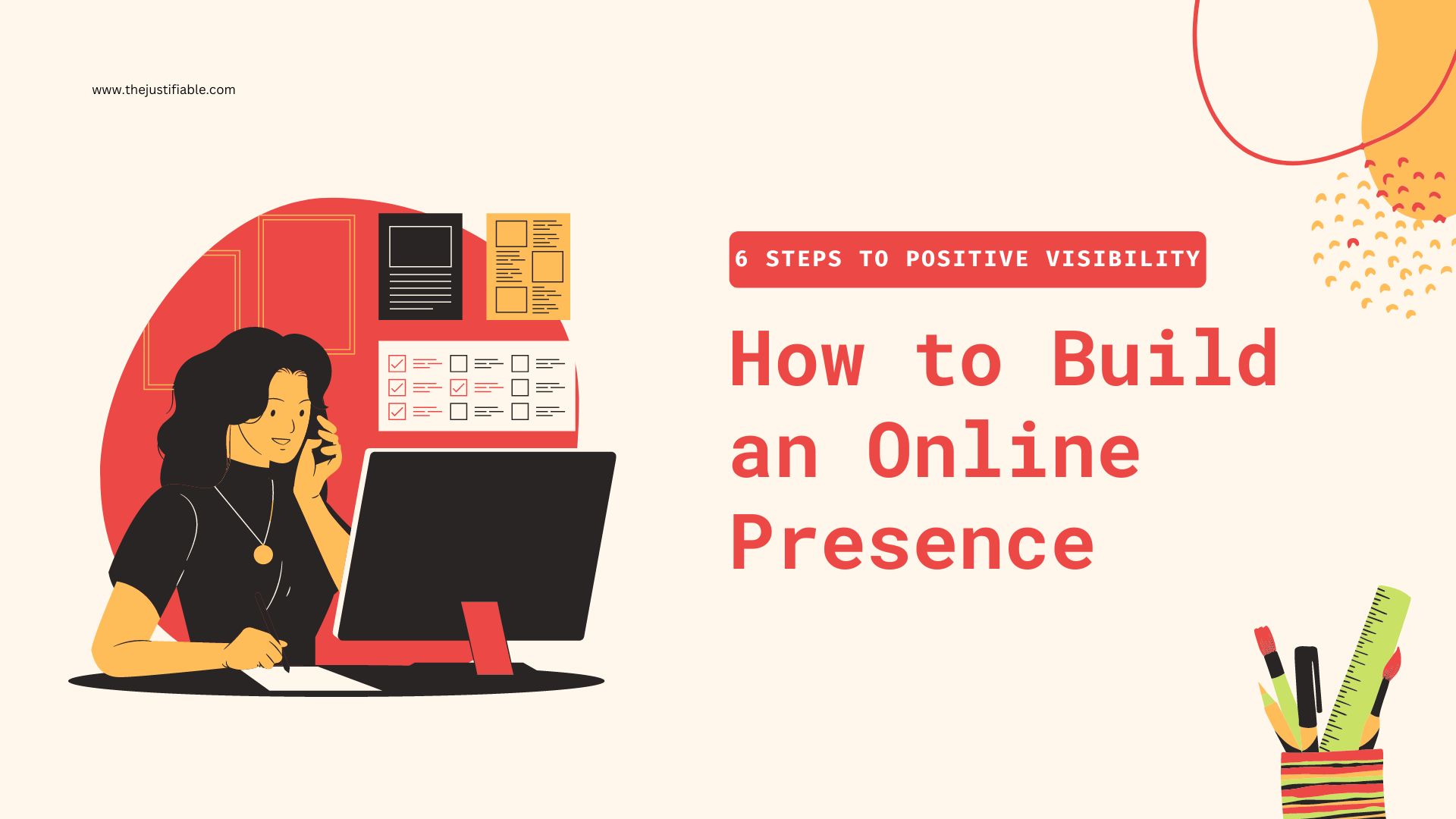Table of Contents
How to build an online presence? Why is it crucial in today’s digital age? These questions are on the minds of many individuals and businesses looking to make their mark online.
From my perspective, establishing a strong online presence is not just beneficial; it’s essential for success. It’s the digital era’s handshake, the first and often most lasting impression you make on potential customers or followers.
In this guide, I’ll walk you through the steps to enhance your visibility online, ensuring that you not only appear in searches but also make a positive impact.
Let’s dive into the digital world together, exploring strategies that will make your online journey both successful and fulfilling.
Step 1: Unleash the Power of a Stellar Website
A stellar website serves as the cornerstone of your online presence. I strongly believe that a well-designed website can significantly impact your digital visibility and credibility.
It’s your online headquarters, where potential customers or followers can learn about who you are, what you offer, and how they can engage with your content or services.
My recommendation is to start with a clear, user-friendly design that reflects your brand’s values and mission. Here’s how you can start: focus on creating an intuitive layout, ensuring your site is accessible and navigable with ease.
Moreover, in my estimation, the content on your website should resonate with your audience, providing them with value and encouraging them to explore further.
A website isn’t just about looks; it’s about substance. From my perspective, integrating SEO best practices from the outset is crucial for ensuring that your site ranks well in search engine results.
This means paying attention to keywords, meta descriptions, and high-quality content that engages and informs your audience. Remember, your website is often the first point of contact with potential clients or fans, making its impact pivotal to your online success.
Web Hosting Recommendations
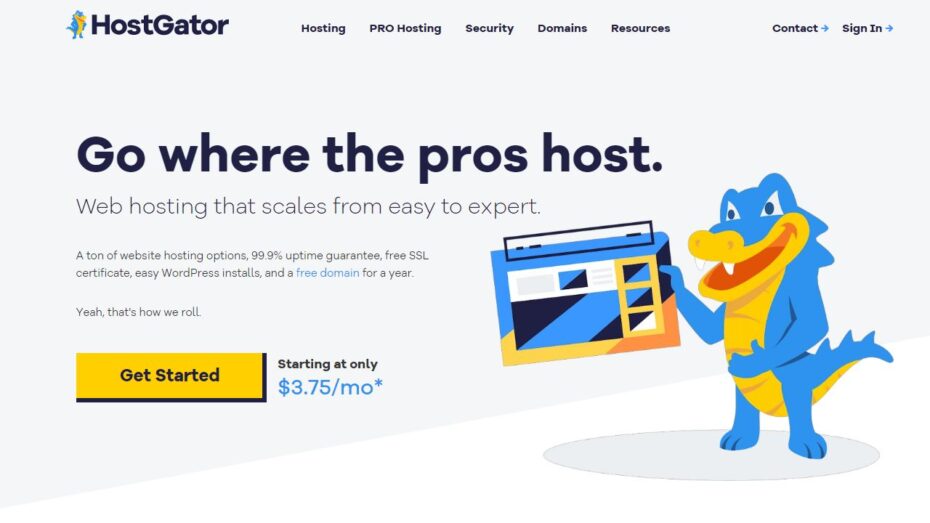 Hostgator
| 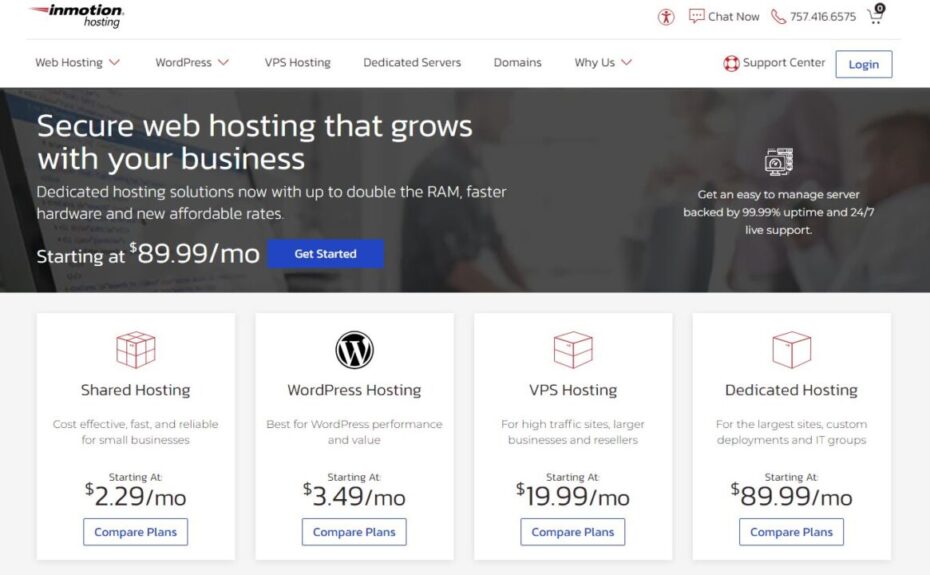 Inmotion
| 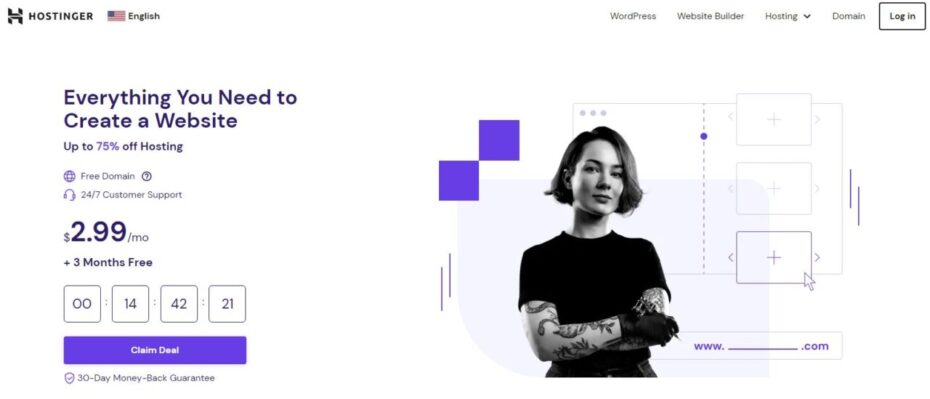 Hostinger
|
Crafting Your Online Hub with Precision
Creating your online hub with precision is essential. From my point of view, every element of your website should serve a purpose, from the layout to the content and the navigation.
I recommend starting with a clear plan of what you want to achieve with your site. What message do you want to convey? Who is your target audience? By answering these questions, you can create a more focused and effective website.
In my opinion, the design of your website should reflect your brand’s identity and values. This includes choosing the right color scheme, font, and imagery that align with your brand. I would say that consistency in design helps build trust and recognition among your audience.
Additionally, ensuring your website is mobile-responsive is no longer optional; it’s a necessity. With more people accessing the internet via mobile devices, your site must look and function well on screens of all sizes.
Furthermore, I believe that the user experience on your website is paramount. This means creating a navigation structure that is logical and easy to follow. If visitors can’t find what they’re looking for quickly, they’re likely to leave and not return.
I suggest incorporating clear call-to-action (CTA) buttons that guide users to take the next step, whether it’s making a purchase, signing up for a newsletter, or contacting you for more information.
Lastly, I strongly believe in the importance of loading speed and security. A fast-loading website not only improves user experience but also positively impacts your search engine rankings.
Implementing security measures, like SSL certificates, protects your site and builds trust with your visitors. From my perspective, these technical aspects are just as crucial as the design and content of your website.
Essential Features Every Website Must Have
From my experience, certain features are non-negotiable for any website looking to make a significant impact online. First and foremost, a user-friendly interface is critical.
This means easy navigation, fast loading times, and mobile responsiveness. I couldn’t agree more with the importance of these elements in keeping visitors engaged and reducing bounce rates.
Secondly, high-quality, original content is key. I am of the view that content not only helps in SEO but also in building your brand’s voice and authority in your niche. Regularly updated blogs or articles can help keep your audience engaged and provide value, establishing your site as a go-to resource.
Another essential feature, in my opinion, is clear contact information and calls to action (CTAs). It might seem obvious, but ensuring that visitors can easily understand how to contact you or what action to take next is crucial for conversion.
My suggestion is to place CTAs prominently on each page, guiding visitors towards making a purchase, signing up for a newsletter, or another desired action.
Lastly, I believe in the power of analytics. Integrating tools like KissMetrics into your website allows you to track visitor behavior, giving you insights into what works and what doesn’t. This information is invaluable for refining your strategy and enhancing your website’s effectiveness.
In my view, these features form the backbone of a successful online presence, supporting your efforts to build connections and grow your digital footprint.
Step 2: Leverage Social Media for Engagement

Did you know that over 3.6 billion people use social media worldwide? This staggering number highlights the vast potential social media holds for brands looking to build an online presence.
In today’s digital landscape, leveraging social media for engagement is not just an option; it’s a necessity.
Social media platforms offer a unique opportunity to connect with your audience, understand their preferences, and build a community around your brand.
By strategically using these platforms, you can significantly enhance your visibility and engagement, laying a strong foundation for your digital presence.
Creating a successful social media strategy involves more than just posting regularly. It requires a deep understanding of your audience, the type of content that resonates with them, and the platforms where they are most active.
Each social media platform has its own set of demographics and user behavior, which means what works on one platform may not work on another.
Therefore, it’s crucial to choose your platforms wisely and tailor your content accordingly. Engaging with your audience through comments, messages, and interactive content can also foster a sense of community and loyalty around your brand.
Selecting the Right Platforms for Your Brand
With a myriad of social media platforms available, selecting the right ones for your brand can seem like a daunting task. However, it’s a critical decision that can significantly impact your online presence. To start,
I recommend analyzing your target audience to understand where they spend their time online. Are they scrolling through Instagram, engaging in Twitter conversations, or watching videos on YouTube? Your brand’s presence needs to align with the platforms your audience uses most frequently.
It’s also important to consider the nature of your business and the type of content you produce. Visual brands, such as fashion or travel, might find more success on platforms like Instagram or Pinterest, where imagery plays a crucial role.
On the other hand, B2B companies may benefit more from LinkedIn’s professional network. In my view, understanding the strengths and audience of each platform will guide you in making informed decisions that align with your marketing goals.
Engagement metrics are another crucial factor to consider when selecting platforms. In my opinion, a platform that offers detailed analytics tools will enable you to measure the success of your social media efforts accurately. These insights can help you refine your strategy, improve engagement, and ultimately, build a stronger online presence.
Lastly, it’s vital to be realistic about the resources you can dedicate to social media management. Each platform requires time and effort to maintain an active, engaging presence.
From my perspective, it’s better to excel on a few platforms than to spread yourself too thin across many. Selecting the right platforms for your brand is the first step toward a successful social media strategy that enhances your online presence.
Tips for Growing Your Social Media Following
Growing your social media following is a gradual process that requires consistency, creativity, and engagement. The first step is to create high-quality, engaging content that resonates with your audience.
This might seem obvious, but it’s the cornerstone of any successful social media strategy. I suggest focusing on the value your content provides to your followers, whether it’s educational, inspirational, or entertaining.
Engaging directly with your audience is another crucial aspect of growing your following. Responding to comments, messages, and participating in relevant conversations can build a strong community around your brand.
I also recommend leveraging user-generated content whenever possible. Sharing content created by your followers not only provides authentic material for your channels but also encourages more interaction from your audience.
Collaborating with influencers or brands that align with your values can also significantly boost your visibility and following. Such partnerships can introduce your brand to a wider audience that’s already engaged and interested in your niche.
In my estimation, choosing the right partners is key to ensuring the collaboration feels genuine and brings mutual benefits.
Lastly, utilizing social media ads can be a powerful tool to reach a larger audience. Platforms like Facebook and Instagram offer sophisticated targeting options to ensure your content is seen by users who are most likely to be interested in your brand.
From my perspective, even a small budget can make a big difference in growing your social media following and, by extension, your online presence.
Step 3: Optimize Your Content for Search Engines
“Content is king, but marketing is queen, and runs the household.” This quotation, often attributed to Gary Vaynerchuk, captures the essence of the importance of search engine optimization (SEO) in the digital age. SEO is not just about creating content; it’s about making sure that content is seen by the right audience.
In this step, we’ll explore how to optimize your content for search engines, a critical component of how to build an online presence. SEO helps your content to stand out in the crowded digital space, ensuring that your message reaches its intended audience effectively and efficiently.
Understanding SEO is fundamental to increasing your visibility online. Most importantly, SEO is not a one-time task but an ongoing strategy that involves optimizing various elements of your website and content to improve your ranking in search engine results. T
his includes optimizing your titles, descriptions, and the content itself, as well as ensuring your website’s structure and code are search engine friendly.
My recommendation is to stay updated with the latest SEO practices and algorithm updates, as the digital landscape is constantly evolving. Implementing these strategies can significantly enhance your online presence and drive more traffic to your site.
SEO Services Recommendations
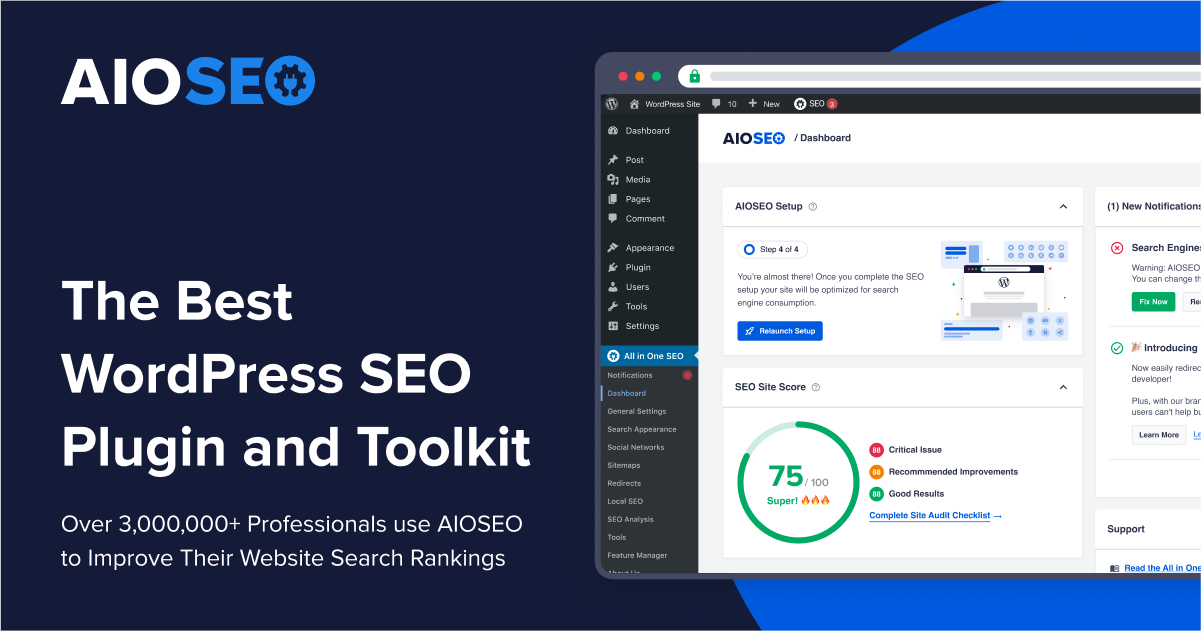 AIOSEO
| 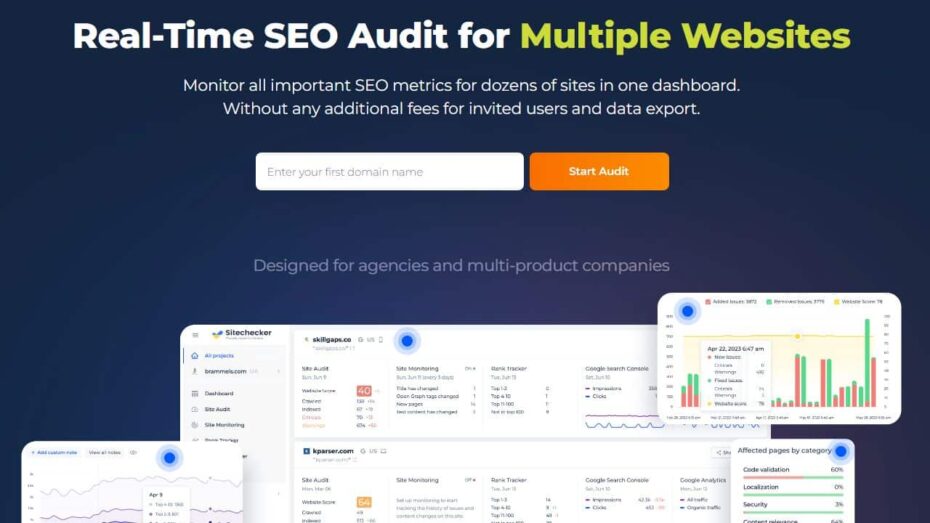 Sitechecker
| 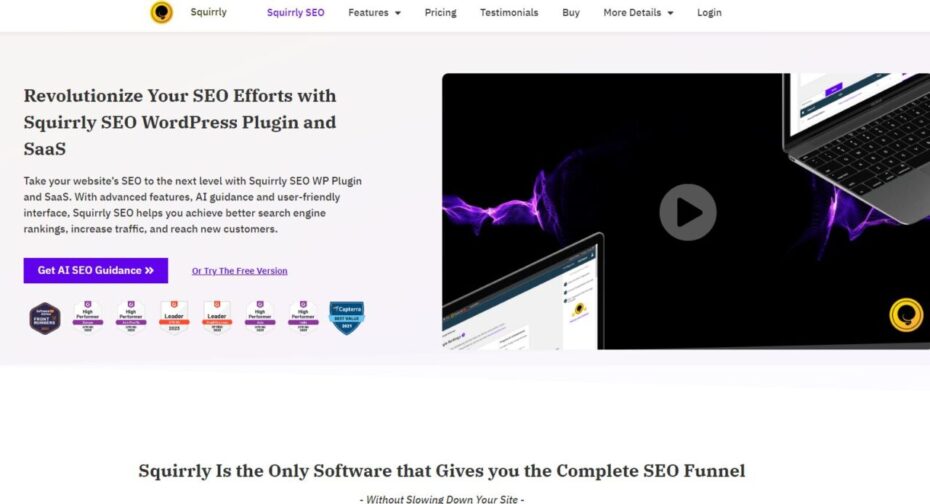 Squirrly
|
Mastering SEO Basics for Higher Visibility
Mastering the basics of SEO is crucial for anyone looking to improve their online presence. At its core, SEO involves enhancing your website and content to make them more attractive to search engines like Google.
This means ensuring that your website is accessible, your content is high-quality and relevant, and your keywords are strategically used. From my perspective, starting with a solid understanding of SEO fundamentals can dramatically increase your site’s visibility and traffic.
Firstly, I would say that focusing on the user experience is key. This includes making sure your website is fast, mobile-friendly, and easy to navigate. Search engines favor websites that provide a good user experience, as they aim to deliver the best possible results to their users.
Additionally, creating valuable, engaging content that meets your audience’s needs is essential. From my point of view, content that answers questions, solves problems, or provides new insights is more likely to rank well in search results.
Another critical aspect of mastering SEO basics is understanding the importance of backlinks. Backlinks, or links from other websites to yours, are a major ranking factor for search engines. They signal that others value your content, which can boost your site’s credibility and ranking.
My suggestion is to focus on creating shareable content and engaging with your industry community to naturally build backlinks over time.
Lastly, keeping an eye on your site’s performance and making adjustments as needed is important. Utilizing tools like Hotjar and Serpstat can provide insights into how your site is performing in search results and where there’s room for improvement.
In my estimation, regular monitoring and updating of your SEO strategy are crucial for maintaining and improving your site’s visibility and engagement.
The Role of Keywords in Content Optimization
Keywords play a pivotal role in content optimization, acting as the bridge between what people are searching for and the content you provide to meet that need. The strategic use of keywords allows your content to be discovered by search engines and matched with relevant queries.
However, it’s crucial to use keywords naturally and avoid keyword stuffing, as search engines have become increasingly sophisticated at recognizing and penalizing such practices.
Firstly, conducting thorough keyword research is essential. This involves identifying the terms and phrases that your target audience is searching for.
From my perspective, understanding the intent behind keywords can also guide the creation of content that directly addresses the needs and questions of your audience. Utilizing tools like Google Keyword Planner or SEMrush can provide valuable insights into keyword trends and competitiveness.
Once you’ve identified your keywords, incorporating them into your content in a natural, reader-friendly way is key. This includes using them in your titles, headings, and throughout your content in a way that enhances readability and relevance.
I suggest focusing on long-tail keywords, which are longer and more specific keyword phrases. These often have lower search volume but can attract more targeted traffic to your site due to their specificity.
Moreover, it’s important to consider keyword placement. Placing keywords in strategic locations, such as the title, headers, and the first 100 words of your content, can signal their importance to search engines.
However, my recommendation is to always prioritize the quality and flow of your writing over forced keyword inclusion. Creating valuable, engaging content should always be your primary goal, with keywords serving to enhance, not detract from, the reader’s experience.
Lastly, remember that SEO and content optimization are not just about attracting traffic but about attracting the right traffic. From my point of view, well-optimized content with carefully chosen keywords can significantly improve your chances of reaching your target audience, increasing engagement, and achieving your online visibility goals.
Step 4: Create Valuable Content Regularly

Just as a garden requires regular care and watering to bloom, your online presence thrives on the consistent creation of valuable content. This comparison underscores the importance of not just producing content, but ensuring it’s meaningful, relevant, and delivered on a regular basis.
In the journey to build an online presence, creating content that resonates with your audience is paramount. It’s about establishing a connection, offering solutions, and providing insights that enrich your audience’s experience. Doing so not only enhances your visibility but also builds trust and authority in your niche.
Consistency in content creation helps keep your audience engaged and encourages repeat visits to your platforms. However, the challenge many face is not just in crafting valuable content but in doing so regularly without sacrificing quality.
It’s a balance that requires planning, creativity, and a deep understanding of your audience’s needs and preferences.
I recommend focusing on topics that are not only relevant to your brand but also offer genuine value to your audience. This could be in the form of how-to guides, industry insights, or updates on the latest trends that affect them. The goal is to become a trusted resource they turn to for information and solutions.
Finding Your Voice: The Key to Compelling Content
Finding your voice is akin to finding the soul of your content. It’s what sets your material apart in a sea of information and creates a unique connection with your audience. Your voice reflects your brand’s personality, values, and perspective, making your content relatable and engaging.
From my perspective, the key to discovering your voice lies in understanding your brand’s core values and how you want to be perceived by your audience. This authenticity is what resonates with readers and turns them into loyal followers.
In my opinion, experimenting with different tones and styles is a part of finding your voice. Not every approach will feel right, but through trial and feedback, you’ll find the sweet spot that truly represents your brand and appeals to your audience.
It’s also important to consider the preferences of your target demographic. A professional, authoritative tone might work well for a B2B company, while a more casual, friendly voice could be better suited for consumer-facing brands.
Moreover, I believe consistency in your voice across all content is crucial for building brand recognition. Whether it’s a blog post, social media update, or email newsletter, your unique voice should be unmistakable. This consistency helps reinforce your brand identity and fosters a stronger bond with your audience.
Finally, don’t underestimate the power of storytelling. Incorporating stories into your content can make it more engaging and memorable. From my point of view, stories can humanize your brand and illustrate your points in a way that’s both entertaining and informative.
Finding your voice is not just about how you say things, but also what you choose to say and how you connect with your audience on an emotional level.
Schedule Success: Planning Your Content Calendar
A well-planned content calendar is like a roadmap to success. It organizes your content creation process, ensuring that you’re consistently publishing material that engages and benefits your audience. From my perspective, the first step in planning your content calendar is to set clear goals.
What do you want to achieve with your content? Whether it’s increasing brand awareness, generating leads, or establishing authority in your niche, having specific objectives will guide your content strategy.
Next, I recommend conducting a content audit. This involves reviewing your existing content to identify what’s working and what’s not. Understanding the types of content that resonate with your audience can help inform your future content strategy.
Additionally, a content audit can reveal gaps in your topics or themes that you can address in your upcoming content.
In my estimation, variety is key to keeping your audience engaged. This means mixing up your content types, from blog posts and articles to videos, infographics, and podcasts. Each format has its strengths and can appeal to different segments of your audience.
Moreover, scheduling content around key dates, events, or launches can maximize its impact and relevance.
Lastly, flexibility in your content calendar is crucial. While it’s important to plan, being able to adapt to emerging trends, news, or feedback from your audience is equally vital.
My suggestion is to leave some room in your calendar for spontaneous content that addresses current topics or audience interests. This approach ensures your content stays fresh and relevant, further solidifying your online presence.
Step 5: Engage with Your Audience Actively
While creating quality content is crucial, it’s equally important to acknowledge that engagement with your audience can truly bring your online presence to life. Engagement transforms passive viewers into active participants, creating a dynamic and interactive online environment.
In the journey of how to build an online presence, engaging with your audience actively not only fosters a sense of community but also provides valuable insights into your audience’s preferences, helping tailor your content and strategies more effectively.
Active engagement involves more than responding to comments or messages; it’s about initiating conversations, asking for feedback, and showing appreciation for your audience’s input. This proactive approach demonstrates that you value their opinion and are interested in what they have to say, which can significantly boost loyalty and trust.
Additionally, it’s essential to be present and consistent in your engagement efforts. Regular interaction ensures that your audience feels heard and valued, which is fundamental in building a strong, engaged community around your brand.
Turning Followers into a Loyal Community
Turning followers into a loyal community is an art that requires sincerity, consistency, and a genuine interest in creating meaningful relationships. The first step in this process is to understand your followers’ needs and interests. This understanding can guide the creation of content that resonates with them and encourages interaction.
I recommend using polls, surveys, and direct questions in your posts to gather insights and foster a dialogue. This not only makes your audience feel involved but also helps tailor your content to better meet their preferences.
Engagement shouldn’t be a one-way street. In my opinion, actively participating in conversations, highlighting user-generated content, and sharing behind-the-scenes glimpses of your work or process can make your audience feel closer to your brand. It creates a sense of belonging and community, which is invaluable for building loyalty.
Additionally, recognizing and rewarding your most active followers can further strengthen this bond. Simple gestures like featuring their content, offering exclusive discounts, or providing early access to new products can go a long way in turning followers into advocates for your brand.
Furthermore, consistency in your engagement efforts is crucial. I believe that regular interaction keeps the community alive and thriving. Setting aside time each day to engage with your audience can make a significant difference in maintaining an active and loyal community.
It’s also important to be authentic and personal in your responses. Generic replies can feel insincere and might discourage further interaction.
Lastly, creating exclusive content or communities for your most engaged followers can enhance the sense of exclusivity and loyalty. Platforms like Patreon, private Facebook groups, or membership sections on your website can offer deeper levels of engagement and value to your most dedicated followers.
From my perspective, these dedicated spaces provide an opportunity for more personal interaction and community-building efforts, further solidifying the relationship between your brand and its audience.
The Art of Handling Feedback Online
Handling feedback online, both positive and negative, is a critical aspect of engaging with your audience. It’s important to approach feedback as an opportunity for growth and improvement.
Acknowledging and responding to feedback shows that you value your audience’s opinions and are committed to providing the best experience possible. When receiving positive feedback, expressing gratitude and acknowledging the specific aspects the user appreciated can reinforce positive perceptions and encourage continued engagement.
Dealing with negative feedback, on the other hand, requires a thoughtful and respectful approach. I recommend viewing negative feedback as constructive criticism that can highlight areas for improvement.
Responding promptly and professionally, while offering solutions or asking for further input, can turn a potentially negative experience into a positive one. It’s essential to maintain a level-headed and empathetic tone, as defensive or dismissive responses can damage your brand’s reputation and alienate your audience.
Moreover, using feedback to inform your content strategy and business decisions can significantly enhance your brand’s relevance and appeal to your audience.
It demonstrates that you’re not just listening but also acting on their suggestions, making your audience feel valued and respected. This can foster a stronger sense of community and loyalty among your followers.
Lastly, it’s beneficial to encourage ongoing feedback by creating dedicated channels for your audience to share their thoughts and suggestions. Whether it’s through social media, email surveys, or a section on your website, providing a platform for feedback makes your audience feel involved in your brand’s evolution.
In my view, the art of handling feedback online is not just about managing responses but about integrating this feedback into your growth strategy, enhancing both your brand and your relationship with your audience.
Step 6: Monitor and Adjust Your Strategy
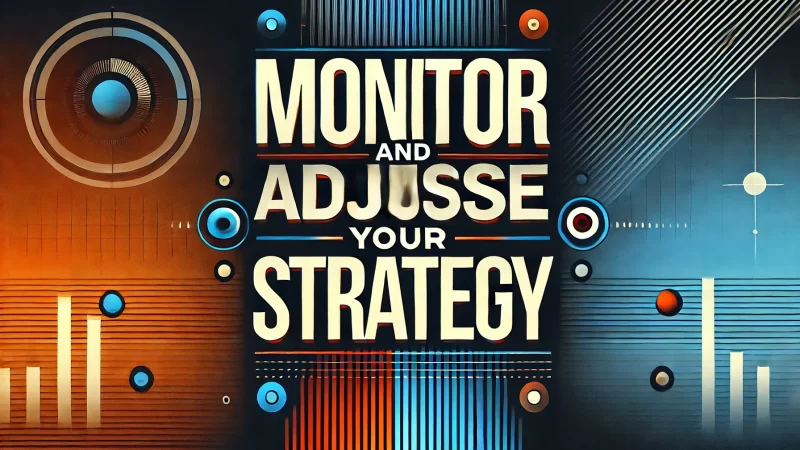
An astonishing 90% of the world’s data has been created in the last two years alone. This explosion of information includes invaluable insights into how users interact with online content, highlighting the critical importance of monitoring and adjusting your digital strategy.
In the context of how to build an online presence, the ability to analyze this data and pivot your strategy accordingly can be the difference between stagnation and growth.
It’s not just about launching campaigns and creating content; it’s about understanding the impact of those efforts and refining your approach to maximize engagement and reach.
Monitoring your online presence goes beyond mere vanity metrics such as likes and followers. It involves a deep dive into analytics to understand user behavior, engagement patterns, and conversion rates.
From my perspective, this data-driven approach allows for informed decision-making that can significantly enhance the effectiveness of your digital strategy.
By regularly reviewing your analytics, you can identify which types of content resonate most with your audience, the best times to post, and which platforms yield the highest engagement. Armed with this knowledge, you can fine-tune your strategy to better align with your audience’s preferences and behaviors.
Using Analytics to Guide Your Digital Path
The power of analytics in shaping your digital strategy cannot be overstated. With the right tools, you can gain insights into nearly every aspect of your online presence, from which pages on your website attract the most visitors to how your social media posts are performing in real time. Google Analytics, for instance, offers a wealth of information on website traffic, user demographics, and behavior patterns.
I suggest starting by setting clear goals within these tools, such as tracking conversions or increasing session duration, to focus your analysis on what matters most to your business.
Once you’re familiar with the basics, diving deeper into the data can uncover trends and opportunities you may have overlooked. For example, analyzing the journey your users take on your website can highlight potential roadblocks or areas where users drop off.
This insight, in my view, is invaluable for optimizing user experience and increasing conversion rates. Additionally, social media analytics can reveal which types of content generate the most engagement, allowing you to tailor your content strategy to what your audience prefers.
But data alone isn’t enough; interpretation is key. It’s not just about what the numbers say, but what they mean for your strategy. I recommend looking for patterns and correlations that can inform future content and marketing strategies.
Perhaps users who read certain types of articles are more likely to subscribe to your newsletter. This could indicate a content opportunity that aligns with your audience’s interests and your business goals.
Furthermore, it’s crucial to keep an eye on industry benchmarks and competitor performance. Understanding where you stand in relation to your competitors can help identify strengths to capitalize on and weaknesses to address.
In my estimation, staying agile and ready to adjust your strategy based on these insights is what can set you apart in the dynamic digital landscape.
The Importance of Being Agile in the Digital Space
Agility in the digital space is about more than just speed; it’s about responsiveness to change and the ability to pivot your strategy based on real-time insights. The digital world evolves at a breakneck pace, with new trends, platforms, and user expectations emerging regularly.
Staying agile ensures that your brand remains relevant and competitive, able to quickly capitalize on new opportunities or mitigate challenges as they arise.
In my experience, agility also means being open to testing new ideas and learning from both successes and failures. Experimentation is a key component of digital strategy, whether it’s trying out new content formats, launching campaigns on emerging platforms, or testing different messaging strategies.
It’s important, from my point of view, to create a culture where experimentation is encouraged, and insights gained from these tests are quickly implemented.
The agility to adjust your strategy also requires a proactive approach to learning and development. Keeping abreast of digital marketing trends, algorithm updates, and emerging technologies can provide a competitive edge. I would say that investing in continuous learning and training for yourself and your team can help ensure your strategies remain effective and innovative.
Lastly, being agile in the digital space means having the flexibility to respond to your audience’s changing needs and preferences. This responsiveness can significantly enhance customer satisfaction and loyalty.
In my opinion, actively seeking feedback and being ready to adjust your offerings based on this feedback is a testament to your commitment to serving your audience best. In the fast-paced digital world, agility is not just an advantage; it’s a necessity for sustained growth and success.
Maintaining Momentum in Your Online Presence Journey
Building and maintaining an online presence is akin to embarking on a long, rewarding journey. It requires dedication, strategy, and adaptability. Just as a journey is enriched by the experiences along the way, your digital presence is strengthened by the engagement, content, and relationships you develop.
Most importantly, the key to success in this endeavor is not just in reaching your destination but in maintaining momentum and continually striving for improvement.
To keep this momentum, regular evaluation and adaptation of your strategy are crucial. The digital landscape is ever-changing, with new technologies, platforms, and user expectations emerging regularly. Therefore, staying informed and flexible allows you to pivot as necessary, ensuring your online presence remains vibrant and relevant.
My suggestion is to make ongoing learning and adaptation part of your routine. This proactive approach can help you anticipate changes, embrace new opportunities, and mitigate challenges effectively.
Here’s How You Can Start
First and foremost, I recommend setting clear, measurable goals for your online presence. These goals can serve as milestones on your journey, helping you track progress and adjust your strategy as needed.
Whether it’s increasing your follower count, boosting engagement rates, or improving website traffic, having specific targets in mind focuses your efforts and resources effectively.
Next, consistently producing high-quality content is paramount. Your content not only attracts visitors but also engages and retains them. From my perspective, diversifying your content types and distribution channels can help reach a wider audience and cater to different preferences.
Additionally, engaging with your audience regularly fosters a sense of community and loyalty, further strengthening your online presence.
Utilizing analytics is another critical step. By monitoring your performance data, you gain insights into what works and what doesn’t. In my opinion, this information is invaluable for refining your content strategy, enhancing user engagement, and ultimately, achieving your online goals. Don’t be afraid to experiment and innovate based on these insights.
Lastly, embracing agility in your digital strategy is essential. The ability to adapt to the evolving digital environment can set you apart from competitors. I strongly believe that those who are flexible, responsive, and willing to embrace change are the ones who thrive in the digital realm.
Regularly reviewing and updating your strategy ensures that your online presence not only keeps pace with the digital evolution but also leads the way.
In conclusion, maintaining momentum in your online presence journey is a continuous process of learning, adapting, and growing. By staying committed to your goals, engaging with your audience, leveraging analytics, and being agile, you can ensure that your digital presence remains strong and impactful.
If you ask me, the journey of building an online presence is one of the most rewarding ventures in today’s digital world, offering endless opportunities for growth and connection.
Frequently Asked Questions (FAQ)
What are the first steps to building an online presence?
To start building an online presence, begin by defining your brand identity, including your mission, values, and target audience. Next, create a professional website with a clear design and user-friendly interface. Establish social media profiles on platforms where your audience is most active. Lastly, develop a content strategy that includes regular updates to your website and social media channels.
How important is social media in building an online presence?
Social media is crucial for building an online presence as it allows you to connect with your audience, share content, and engage in conversations. It provides a platform to showcase your brand’s personality and reach a wider audience through shares and recommendations. Social media also helps in building relationships with potential customers and influencers in your industry.
What role does SEO play in establishing an online presence?
SEO (Search Engine Optimization) is vital for establishing an online presence because it improves your website’s visibility on search engines like Google. By optimizing your website content, using relevant keywords, and ensuring a good user experience, you can attract more organic traffic. This increases your chances of reaching potential customers who are searching for the products or services you offer.
How can I use content marketing to build my online presence?
Content marketing involves creating and sharing valuable content to attract and engage your target audience. Start by understanding your audience’s needs and interests, then produce high-quality content such as blog posts, videos, infographics, and podcasts that address those needs. Consistently publishing and promoting your content helps establish your brand as an authority in your industry and drives traffic to your website.
What are the best platforms to build an online presence?
The best platforms depend on your target audience and industry. A professional website is essential, but you should also consider social media platforms like Facebook, Instagram, LinkedIn, and Twitter. For visual content, platforms like Pinterest and YouTube can be beneficial. Additionally, consider creating profiles on industry-specific forums and directories.
How often should I update my online content?
Updating your online content regularly is important for maintaining an active and relevant online presence. Aim to publish new blog posts or articles at least once a week, and update your social media channels daily. Regular updates signal to search engines and your audience that your brand is active and engaged.
What are some common mistakes to avoid when building an online presence?
Common mistakes include neglecting SEO, inconsistent branding across platforms, not engaging with your audience on social media, and failing to provide valuable content. Additionally, avoid spreading yourself too thin by trying to be active on too many platforms at once. Focus on quality over quantity and ensure that your website is user-friendly and mobile-optimized.
How can I measure the success of my online presence efforts?
Measure the success of your online presence by tracking key metrics such as website traffic, social media engagement, conversion rates, and search engine rankings. Tools like Kissmetrics, social media insights, and SEO tracking software can provide valuable data. Regularly review these metrics to understand what’s working and where improvements are needed.
How important is it to engage with my audience online?
Engaging with your audience is critical for building a strong online presence. Respond to comments and messages, ask for feedback, and participate in conversations. This interaction helps build trust and loyalty with your audience, making them more likely to support your brand and recommend it to others.
Can paid advertising help in building an online presence?
Yes, paid advertising can significantly boost your online presence by increasing your visibility and reaching a larger audience quickly. Platforms like Hilltopads and Adzooma allow you to target specific demographics and interests, driving targeted traffic to your website and social media profiles. However, it’s important to balance paid efforts with organic strategies for long-term success.


